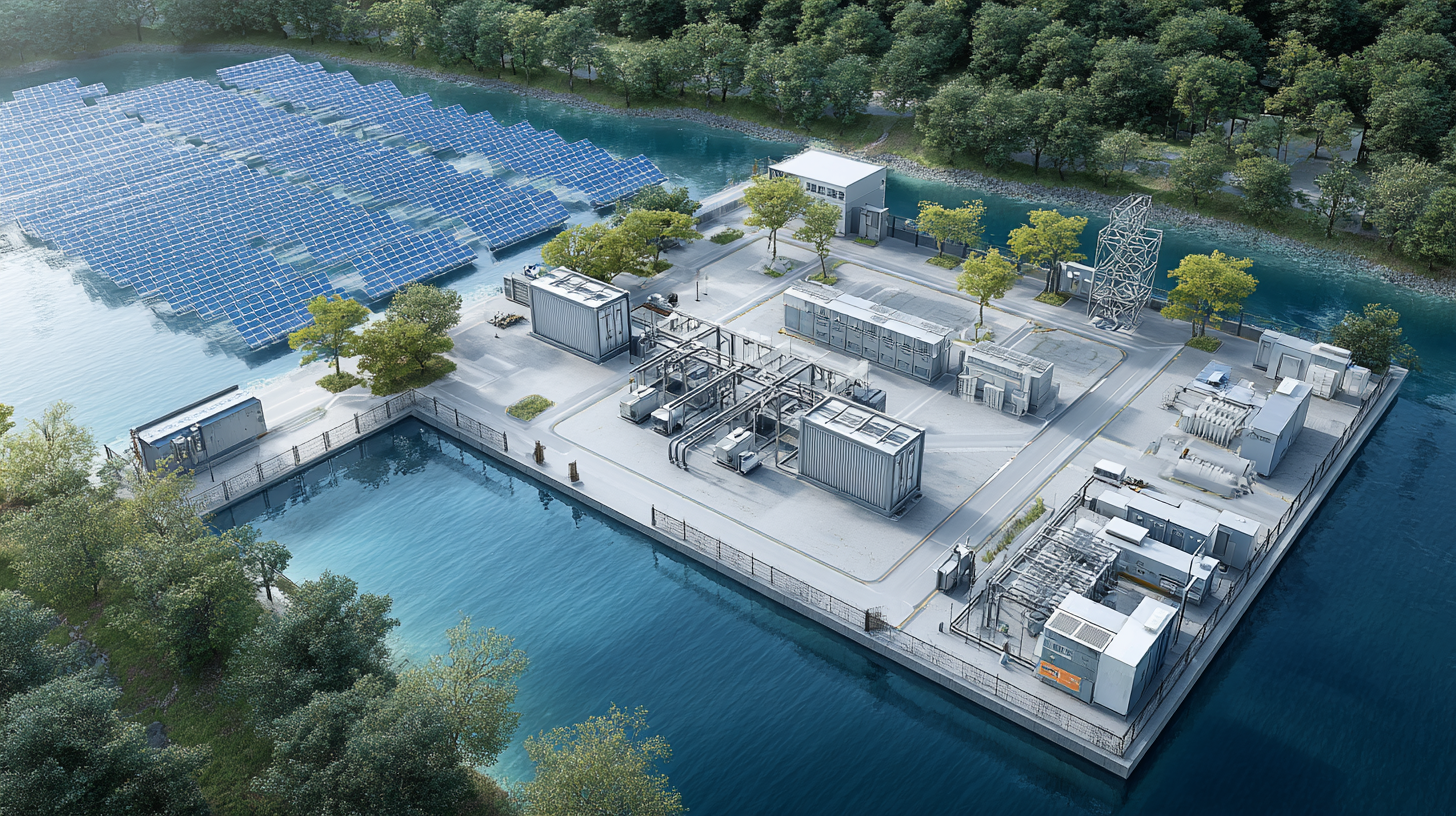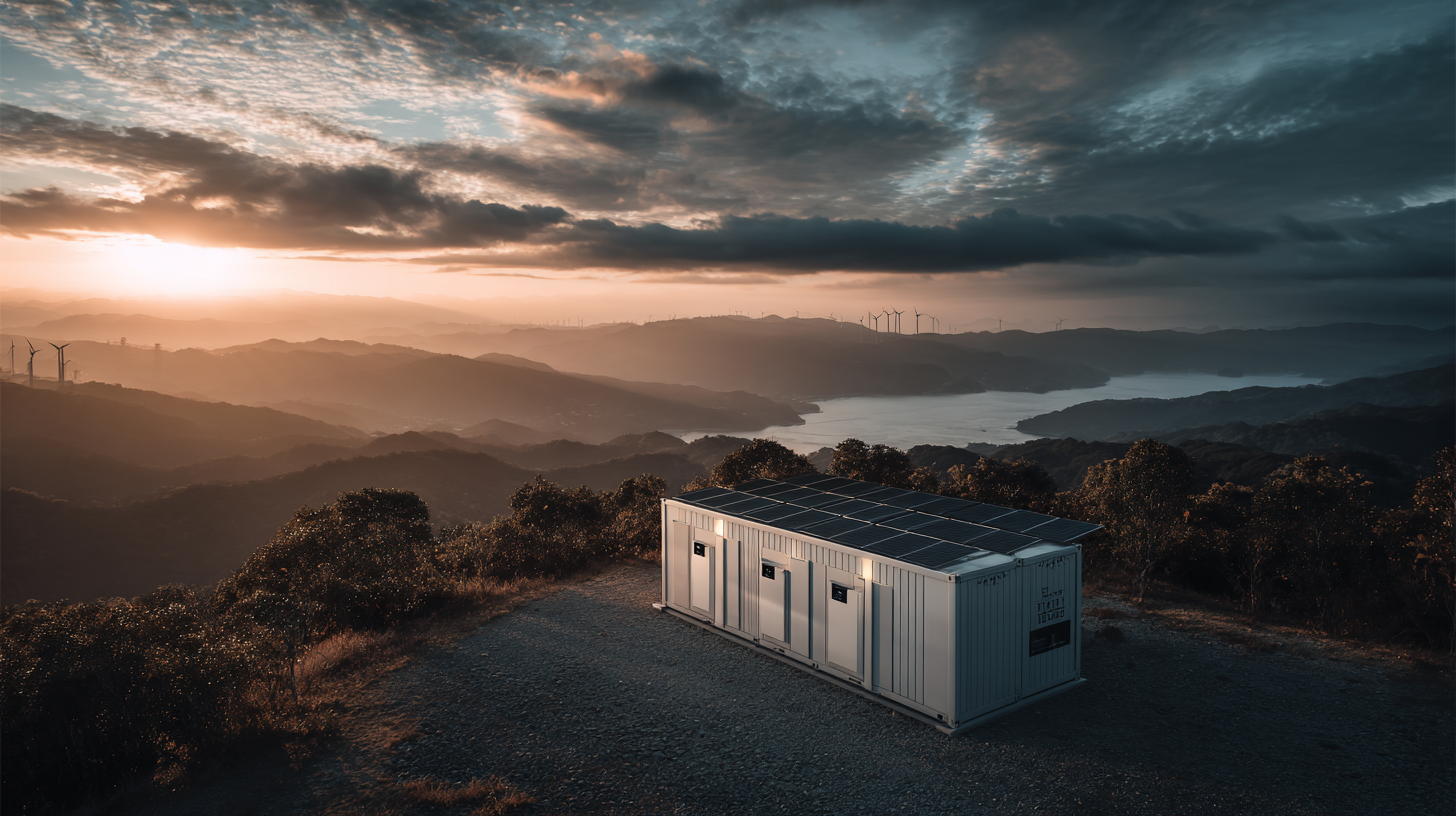As the world increasingly pivots towards sustainable energy solutions, the role of advanced energy storage technologies becomes ever more crucial. Among these innovations, Ess Energy Storage stands out as a transformative approach that not only enhances the reliability of renewable energy systems but also promotes energy independence and efficiency.

In this blog, we will explore a comprehensive checklist designed to guide businesses and consumers in evaluating the potential of Ess Energy Storage solutions. From understanding the technology behind these systems to assessing their environmental impact and cost-effectiveness, this article will serve as a vital resource for anyone looking to embrace the future of energy sustainability.
Join us as we delve into the key considerations that can help shape a greener and more resilient energy landscape.
 The growing emphasis on sustainable energy solutions has brought energy storage systems (ESS) to the forefront. By 2033, the global ESS industry is projected to expand from $949,433 thousand in 2025 to $2,370,986 thousand, reflecting a compound annual growth rate of 2.12%. This substantial growth underscores the critical role of energy storage in enhancing renewable energy deployment and stability.
The growing emphasis on sustainable energy solutions has brought energy storage systems (ESS) to the forefront. By 2033, the global ESS industry is projected to expand from $949,433 thousand in 2025 to $2,370,986 thousand, reflecting a compound annual growth rate of 2.12%. This substantial growth underscores the critical role of energy storage in enhancing renewable energy deployment and stability.
Understanding why energy storage matters is essential for anyone involved in sustainable solutions. Energy storage technologies, such as hydrogen storage alloys, play a pivotal role in harnessing renewable energy sources like wind and solar power. They ensure that excess energy generated can be stored and utilized when demand peaks, thereby optimizing energy use and reducing waste. As different applications emerge—from fuel cells to chemical hydrogen storage—it's clear that these systems are vital for a reliable and sustainable energy future.
Tips for integrating energy storage into your sustainable strategy:
As the world shifts towards sustainable energy solutions, the role of energy storage has become increasingly vital. Various types of energy storage products play a crucial part in optimizing energy use and ensuring reliability. Lithium-ion batteries, for instance, are widely popular due to their high energy density, long cycle life, and decreasing costs. These batteries are ideal for applications ranging from electric vehicles to residential energy storage systems, providing quick response times to fluctuations in energy supply and demand.
Another promising option is pumped hydro storage, which utilizes gravitational potential energy. By pumping water to a higher elevation during low energy demand, and releasing it to generate electricity during peak times, this method serves large-scale energy balancing effectively. Additionally, flow batteries offer unique advantages in applications requiring long cycle times and scalability, making them suitable for renewable energy integration, particularly with solar and wind sources. Each storage solution has its specific features and best uses, emphasizing the importance of selecting the right technology to meet diverse energy needs in a sustainable future.
Battery technology plays a crucial role in the advancement of sustainable energy solutions, with different types offering unique advantages and drawbacks. Among these technologies, lithium-ion batteries have gained significant traction due to their high energy density, longevity, and decreasing costs. According to a report from the International Energy Agency (IEA), lithium-ion battery prices have fallen by nearly 90% since 2010, making them a more viable option for energy storage in residential and commercial applications. This dramatic reduction is paving the way for increased adoption of electric vehicles (EVs) and renewable energy systems.
On the other hand, lead-acid batteries, although older and less efficient, still hold a prominent position in certain applications due to their lower initial cost and ease of recycling. A study by Grand View Research indicates that the lead-acid battery market is expected to reach $75 billion by 2025, primarily driven by demand in the automotive sector. However, as new alternatives emerge, such as solid-state batteries and flow batteries, the industry is witnessing a shift towards these innovative technologies that promise enhanced performance and safety, thereby addressing the limitations of traditional battery systems. As the search for more sustainable energy solutions continues, understanding these battery technologies will be pivotal in shaping the future landscape.
This chart compares different battery technologies based on their energy density in watt-hours per kilogram (Wh/kg). As we move towards a more sustainable energy future, understanding the strengths of various batteries is crucial for developing efficient energy storage solutions.
When selecting the right energy storage system, it's essential to assess your specific needs and requirements. The global energy storage market is anticipated to grow significantly, projected to reach over $500 billion by 2027, as reported by various industry experts. This growth highlights the increasing importance of energy storage systems in leveraging renewable resources. For residential applications, the selection criteria might include capacity, efficiency, lifespan, and compatibility with existing solar panels or wind turbines.

A key consideration is the type of battery technology used in the energy storage system. Lithium-ion batteries dominate the market due to their high energy density and decreasing costs, which have dropped by nearly 89% since 2010, according to BloombergNEF. However, evaluating other options such as flow batteries or sodium-sulfur batteries may also be beneficial for specific applications, especially when longer discharge times are required. Ultimately, understanding your energy consumption patterns and conducting a thorough analysis of available technologies will empower you to make the right choice for a sustainable energy future.
The current energy landscape is undergoing a significant transformation, driven by the increasing demand for sustainable solutions. According to a report by the International Energy Agency (IEA), global renewable energy capacity is projected to exceed 4,000 gigawatts by 2025, highlighting the need for innovative energy storage technologies that can complement these renewable sources. Best Ess Energy Storage is at the forefront of this movement, offering cutting-edge products designed to enhance energy efficiency and reliability.
Best Ess Energy Storage systems utilize advanced lithium-ion technology, enabling a higher energy density and longer lifespan compared to traditional lead-acid batteries. Research from BloombergNEF indicates that the global energy storage market could reach 1,000 gigawatt-hours by 2030, fueled by the growing adoption of electric vehicles and the need for dependable energy sources. By integrating Best Ess products, users can experience improved energy management, peak shaving, and lower energy costs, making them an indispensable part of the future energy ecosystem. These innovative solutions not only address current energy challenges but also pave the way for a sustainable energy future.